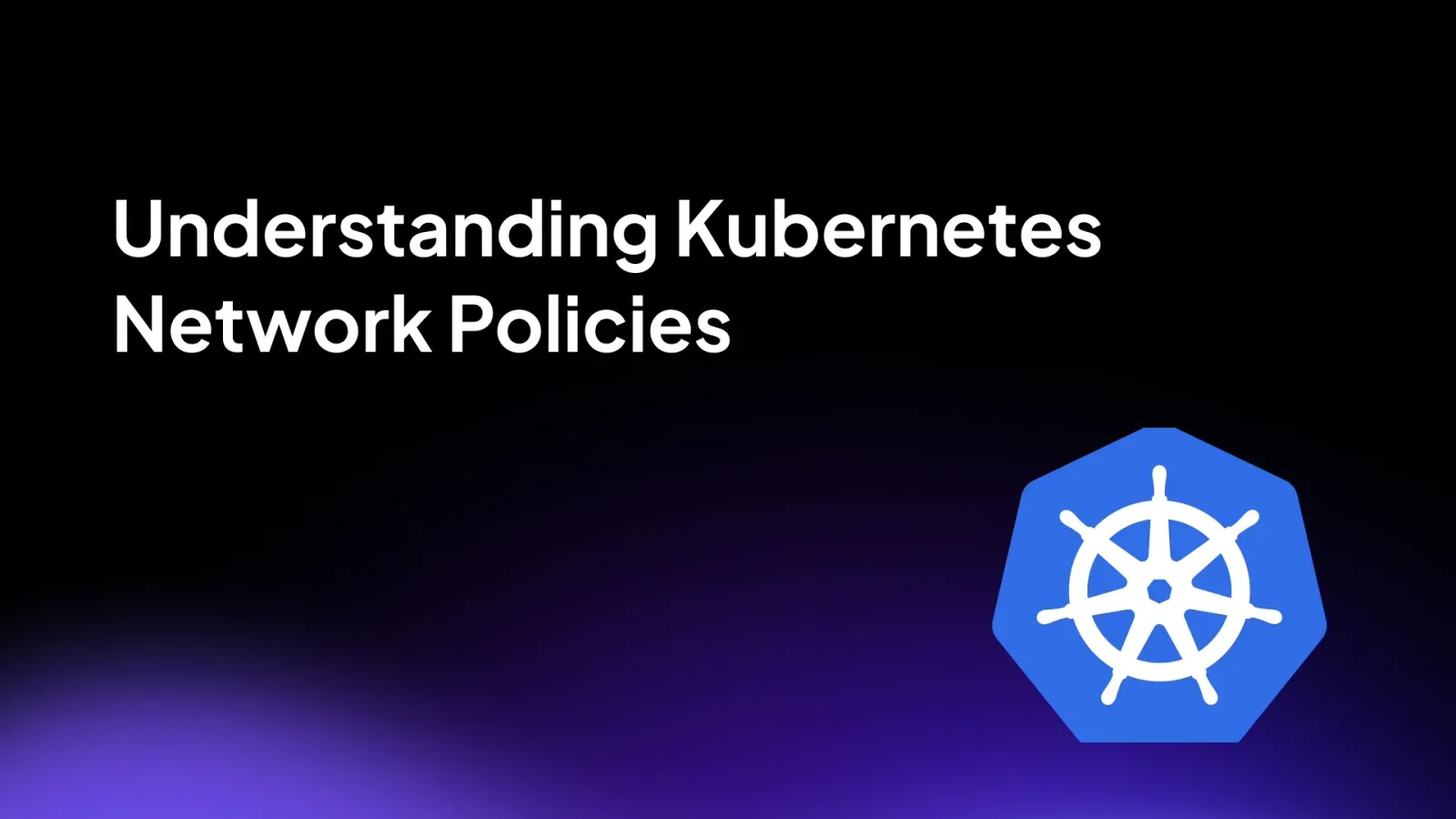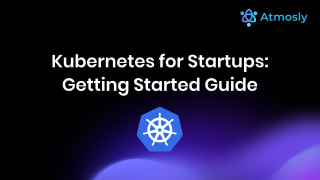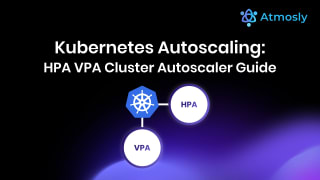Introduction
Kubernetes network policies are a crucial aspect of managing communication in Kubernetes clusters. They provide security by defining how pods can communicate with each other and with external resources. In this blog, we will explore how to implement Kubernetes network policies, the role of Open Policy Agent (OPA) in enhancing these policies, and how Atmosly, a platform engineering tool, simplifies the implementation process.
Overview of Kubernetes Network Policies
Kubernetes network policies are a set of rules that control the communication between pods within a Kubernetes cluster. By controlling traffic flow, network policies ensure that only authorized communication is allowed between pods and other network endpoints, thus enhancing security. These policies are vital for managing Kubernetes security in production environments.
Importance of Kubernetes Network Policies
In a Kubernetes environment, network policies are essential for securing pod communication. By default, Kubernetes allows unrestricted pod communication, which can lead to significant security risks in production environments. Implementing network policies helps mitigate these risks by allowing traffic only from authorized sources, thereby reducing the attack surface.
Default Behaviour of Pod Communication in Kubernetes
By default, Kubernetes does not restrict pod-to-pod communication, meaning that any pod can communicate with any other pod. While this may simplify development, it can create security vulnerabilities in production. A compromised pod can gain unauthorized access to sensitive data or disrupt operations in other pods.
Problems with Unrestricted Pod Communication
Unrestricted communication between pods can lead to the following issues:
- Security Vulnerabilities: Without network policies, malicious actors can exploit vulnerabilities in one pod to compromise others.
- Data Leakage: Sensitive data may be exposed to unauthorized pods, leading to potential breaches.
- Resource Abuse: Pods can consume excessive network bandwidth, impacting the overall Kubernetes cluster performance.
Implementing Kubernetes network policies allows administrators to define which pods can communicate and under what conditions, ensuring enhanced security and better resource management.
How to Implement Kubernetes Network Policies
Implementing network policies in Kubernetes is crucial for securing pod communication. Here's a step-by-step guide on how to implement network policies.
Step 1: Understanding Kubernetes Network Policies
Kubernetes network policies are used to control traffic between pods. They define rules that allow or block incoming and outgoing traffic. The two main types of policies are:
- Ingress Policies: These control incoming traffic to a pod.
- Egress Policies: These control outgoing traffic from a pod.
Step 2: Define a Network Policy
Network policies are defined using YAML files. Here's an example of a basic ingress policy in Kubernetes:
apiVersion: networking.k8s.io/v1
kind: NetworkPolicy
metadata:
name: allow-specific-ingress
namespace: production
spec:
podSelector:
matchLabels:
app: myapp
policyTypes:
- Ingress
ingress:
- from:
- namespaceSelector:
matchLabels:
environment: production
ports:
- protocol: TCP
port: 8080
This policy allows incoming traffic to pods labeled app: myapp from any pod in the production namespace, only on port 8080.
Step 3: Apply the Network Policy
To apply the policy, use the following kubectl command:
kubectl apply -f allow-specific-ingress.yamlThis command applies the policy to the specified namespace and ensures that only the allowed traffic can reach the selected pods.
Step 4: Verify the Network Policy
After applying the network policy, you can verify it with the following kubectl describe command:
kubectl describe networkpolicy allow-specific-ingress -n productionThis will show the policy details, including which pods are affected and the allowed ingress traffic.
Step 5: Implement Egress Policies in Kubernetes (Optional)
If you need to control outgoing traffic from pods, define an egress policy using the following YAML example:
apiVersion: networking.k8s.io/v1
kind: NetworkPolicy
metadata:
name: allow-specific-egress
namespace: production
spec:
podSelector:
matchLabels:
app: myapp
policyTypes:
- Egress
egress:
- to:
- ipBlock:
cidr: 10.0.0.0/24
ports:
- protocol: TCP
port: 80This policy allows egress traffic from the myapp pods to the 10.0.0.0/24 range on port 80.
Integrating Open Policy Agent (OPA) with Kubernetes Network Policies
While Kubernetes native network policies are powerful, Open Policy Agent (OPA) can further enhance your policy enforcement capabilities. OPA is a policy engine that allows you to define complex, custom policies for Kubernetes resources, including network policies, using a flexible policy language called Rego.
With OPA, you can:
- Validate network policies: Ensure that network policies are applied across namespaces, and enforce specific rules (e.g., ensuring a deny-all policy by default).
- Add additional layers of security: OPA can enforce more complex conditions such as requiring that only certain namespaces can communicate with each other or that traffic must comply with organizational security standards.
- Custom compliance: OPA can enforce organizational policies around traffic control, ensuring that every deployment meets security and regulatory requirements.
Example: Enforcing Network Policies with OPA
Here’s a simple example of an OPA policy that ensures every namespace has at least one network policy:
package kubernetes.networking
deny[{"msg": msg}] {
input.request.kind.kind == "Namespace"
count({n | input.networking.networkPolicies[_].metadata.namespace == input.request.object.metadata.name}) == 0
msg := "Namespace must have at least one network policy defined."
}
This OPA policy ensures that every Kubernetes namespace must have at least one network policy applied. This is just one example of how OPA can enhance Kubernetes network security beyond native capabilities.
Kubernetes Network Policies vs. OPA Policies
Kubernetes Network Policies are declarative and focus on controlling traffic at Layer 3/4 of the OSI model, governing ingress and egress traffic between pods based on labels and namespaces. They are simple and efficient for basic security needs but limited in flexibility.
On the other hand, OPA Policies are more flexible and operate at a broader scope. They allow for complex, custom policies using the Rego policy language. OPA can enforce rules beyond traffic control, such as ensuring specific configurations or compliance standards. It provides a layer of dynamic policy enforcement that can cover admission control, resource configurations, and more.
Key Differences:
- Scope of Control: Kubernetes network policies manage traffic flow, whereas OPA can manage more complex policies like access control and compliance checks.
- Flexibility: OPA policies allow for granular conditions and can handle more sophisticated requirements, while Kubernetes network policies are more basic and specific to traffic control.
- Layer of Operation: Kubernetes policies operate at the network layer, while OPA policies can encompass broader operational and security policies.
Pros and Cons of Kubernetes Network Policies

Atmosly: Simplifying Kubernetes Network Policy Implementation
Atmosly is a platform engineering tool designed to make Kubernetes management, including network policy implementation, easier and more efficient. With Atmosly, users can define, manage, and revoke network policies seamlessly, all while ensuring that these policies are automatically applied to Kubernetes clusters without the need for manual intervention.
Atmosly's policy engine provides:
- Automated Policy Enforcement: Define ingress and egress network policies easily through a user-friendly interface, and Atmosly will handle the rest—automatically applying and enforcing these policies across your clusters.
- Policy Revocation: Atmosly allows administrators to revoke or modify policies at any time, ensuring that network rules are dynamically updated as needed without downtime.
- Simplified Management: By integrating Kubernetes, OPA, and other tools into one cohesive platform, Atmosly reduces the complexity of managing security policies in Kubernetes clusters, providing complete visibility and control.
With Atmosly, defining Kubernetes network policies becomes as simple as clicking a few buttons, while still maintaining the robust, customizable nature of Kubernetes and OPA's security features.
Conclusion
In conclusion, Kubernetes network policies play a critical role in managing and securing communication within Kubernetes clusters. By default, Kubernetes allows unrestricted communication between pods, which might not be ideal for every organization, especially those handling sensitive data. Implementing network policies provides a way to enforce rules that control which pods can communicate with each other, thus enhancing security and reducing potential vulnerabilities.
Kubernetes network policies operate at the network and transport layers (OSI layers 3 and 4), making them efficient and fast. However, they lack the granularity of application-layer policies offered by Open Policy Agent (OPA), which can provide more complex and customizable security controls. Combining both approaches offers a robust solution to secure your Kubernetes environment.
Finally, using tools like Atmosly simplifies the implementation and management of these policies, allowing users to define, apply, and revoke network policies with ease. Atmosly's automation and intuitive interface make it an ideal solution for organizations looking to manage their Kubernetes network security efficiently.
By effectively leveraging Kubernetes network policies and tools like OPA and Atmosly, you can significantly enhance the security posture of your Kubernetes deployments, ensuring your applications remain resilient and secure.






